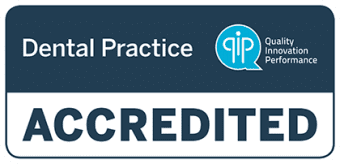Dental Fillings in East Gosford, Central Coast, NSW.
Our experienced team of dentists in East Gosford are committed to providing you with quality dental services on the Central Coast.
Tooth-coloured dental fillings blend seamlessly into your smile. At VC Dental we provide both composite resin (direct) and ceramic/porcelain (indirect) restorations. They are completed on the same day in one appointment.
Call us today to discuss your dental needs, or click this button to book an appointment online now.
A dental filling is a type of restoration used to restore the shape, function and structural integrity of a damaged tooth.
Reasons a tooth might be damaged include: tooth decay, trauma, fracture or wear.
The filling will also seal the tooth surface, preventing further bacteria from entering and causing additional damage.
Types of dental filling materials
At VC Dental we use two different types of restorative materials depending on the type of restoration required:
- composite resin, or
- ceramic (porcelain).
Both of these materials are made to match your natural tooth colour and blend in seamlessly.
Types of dental restorations
There are two types of restorations used depending on the size of the restoration required (how damaged the tooth is):
- Direct restorations, and
- Indirect restorations.
The direct restorative method involves placing restorative material directly in the tooth itself, while indirect restorations are fabricated outside of the mouth and then cemented onto the tooth.

Direct restorations
Used for smaller restorations. This method involves placing composite resin directly into the prepared tooth cavity.
Composite resin is soft and malleable so it can be shaped to fit the exact contours of the tooth.
Indirect restorations
Used for larger restorations. These restorations are custom-made out of ceramic (porcelain).
A computer creates a digital model of the tooth cavity, the restoration is fabricated outside the mouth to those specifications, and it is then cemented onto the tooth.
The type of indirect restorations we use for dental fillings are inlays and onlays:
- An inlay is applied to the inside of a tooth.
- An onlay is applied both in and over the cusp (outer edge) of the tooth.

Inlay

Onlay
Dental Restoration Procedures
Direct Restorations – Composite Resin
This procedure is used for smaller restorations and is completed in one appointment.
First the tooth surface is prepared (e.g. decay and/or damage is removed). Then the area is cleansed to remove bacteria and/or debris.
A gentle phosphoric acid gel is then applied to the surface of the natural tooth. It stays on for 10 seconds (this doesn’t hurt). This is done to micro etch the tooth surface (give it a rough texture), which enhances adhesion. Similar to roughing up a surface with sandpaper to help paint stick better, acid etching of the tooth surface strengthens the bond of the sealant and composite resin that will be applied on top. After 10 seconds the gel is removed.
Then the tooth surface is coated with a liquid plastic sealant (referred to as a “bonding agent”). Because it’s a liquid, it easily seeps in between the bumps of the etched (roughened) surface. This is then cured (hardened) with a blue light which causes it to become locked (‘bonded’) onto the tooth’s surface.
Composite resin is then shaped on top of the bonded sealant in layers. After each layer is applied, it is cured (hardened) with a blue light. As each layer is placed and cured, it creates a chemical bond with the previous layer.
The result is a smooth, strong and durable restoration that is colour-matched to your natural tooth colour.
Indirect Restorations – Porcelain
An indirect restoration is any custom-made restoration that is fabricated outside of the mouth. These include inlays, onlays, dental crowns, dental bridges, and veneers.
The type of indirect restorations we use for dental fillings are inlays and onlays:
- An inlay is applied to the inside of a tooth.
- An onlay is applied both in and over the cusp (outer edge) of the tooth.
They are made using our CEREC computer restoration system and are completed in just one appointment.
Procedure:
First the tooth surface is prepared (e.g. decay and/or damage is removed). Then the area is cleansed to remove bacteria and/or debris.
A special camera takes a photo of the tooth surface inside your mouth, and then a computer creates a virtual design model of the restoration based off the photo. There is no need for impressions. The data for the restoration model is then electronically sent to our on-site milling unit, which uses a precise cutting tool to fabricate the restoration out of porcelain material. After fabrication the restoration is then fitted to the tooth, and cemented into place.
This is all completed whilst you are in the dental chair.
For more information about our CEREC CAD/CAM system please click here.

Inlay

Onlay
Onlay procedure video:


